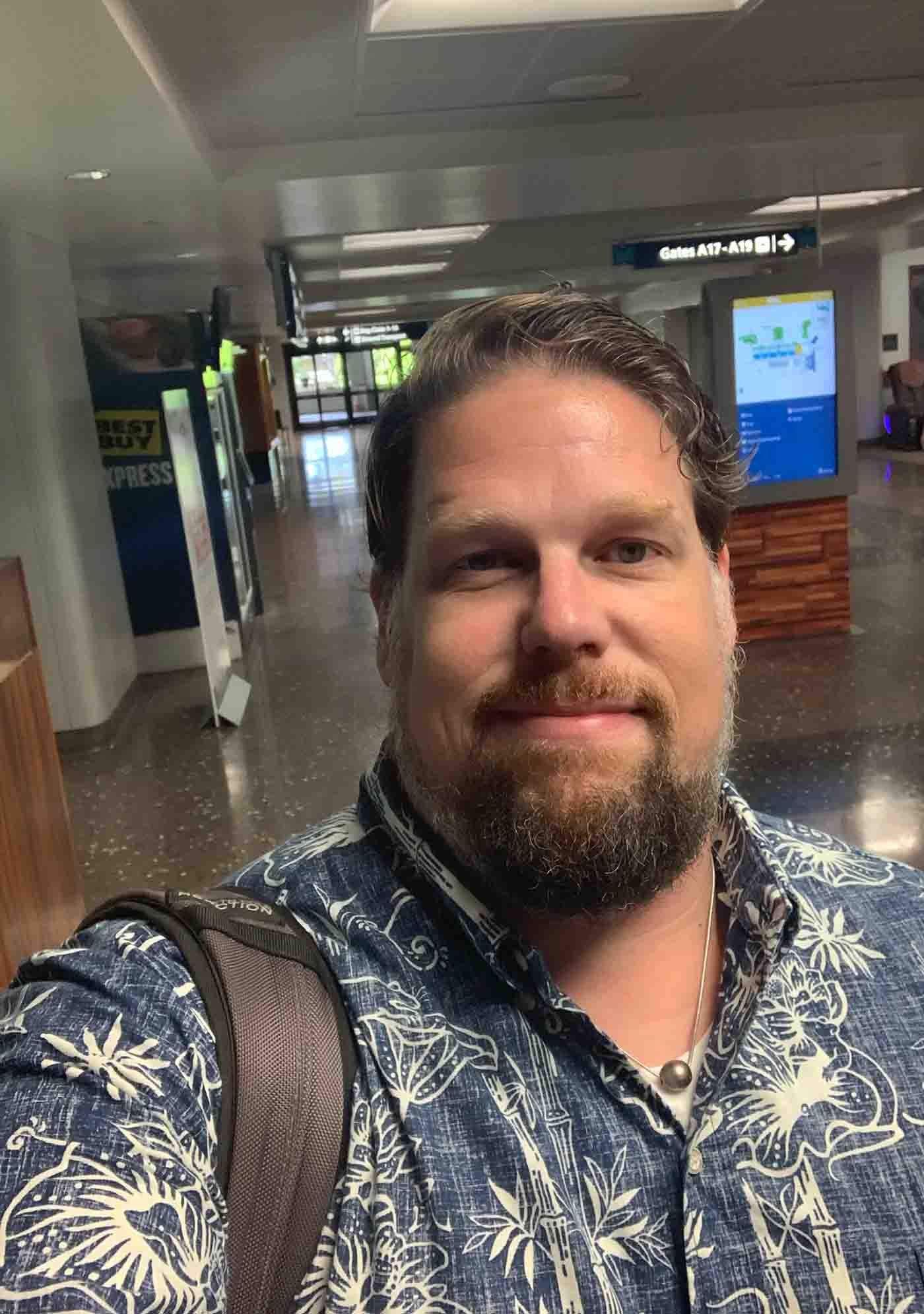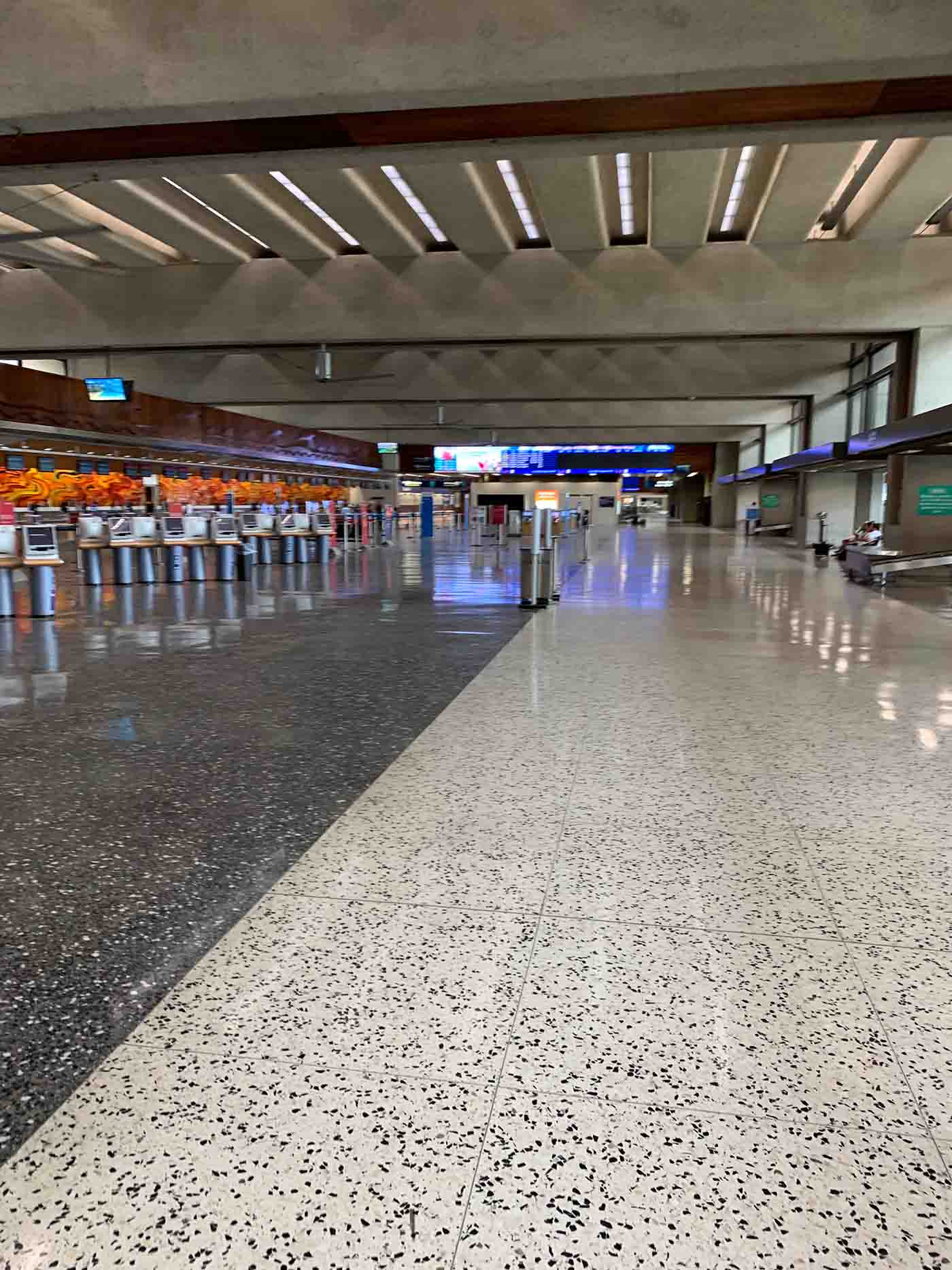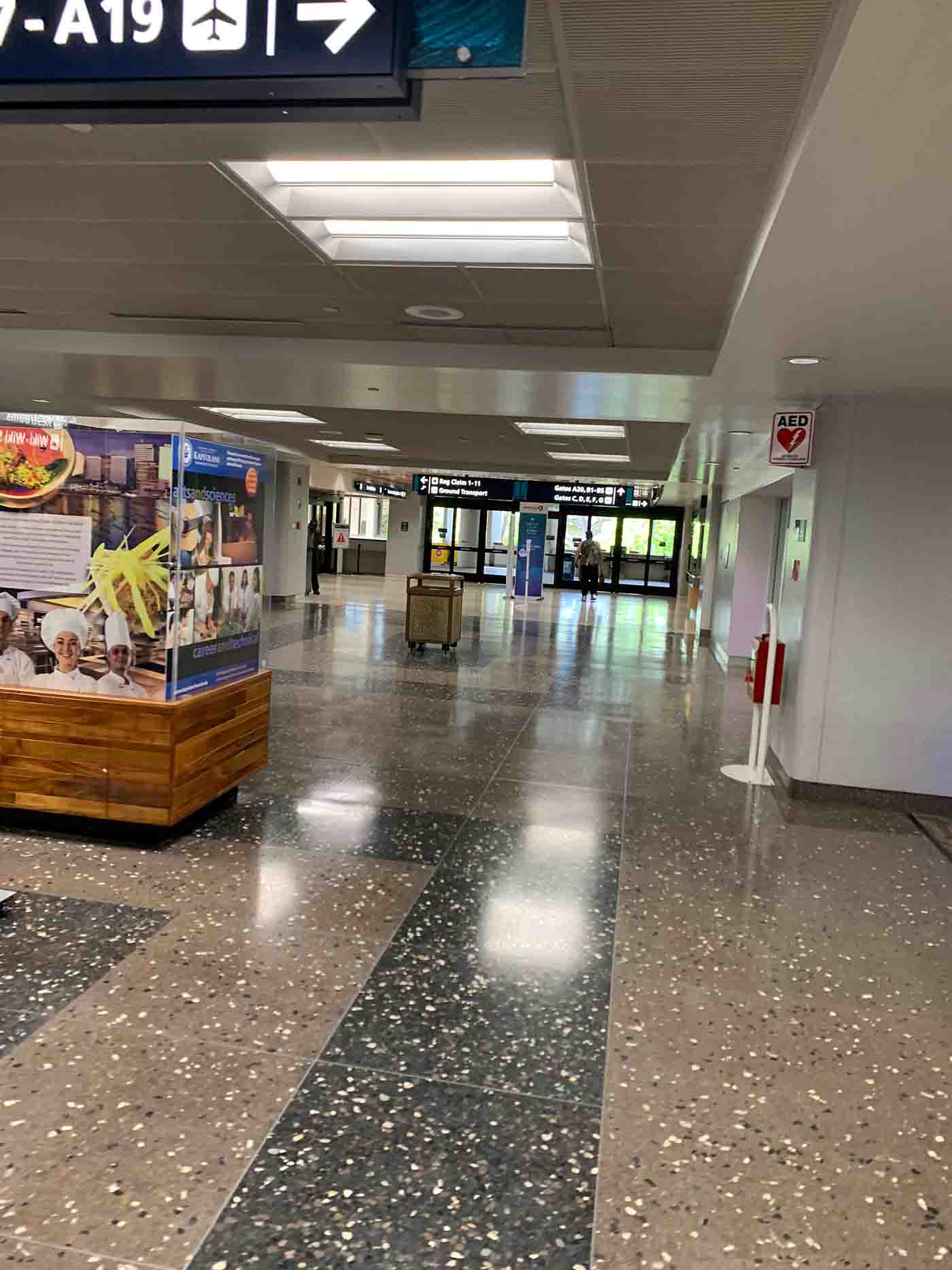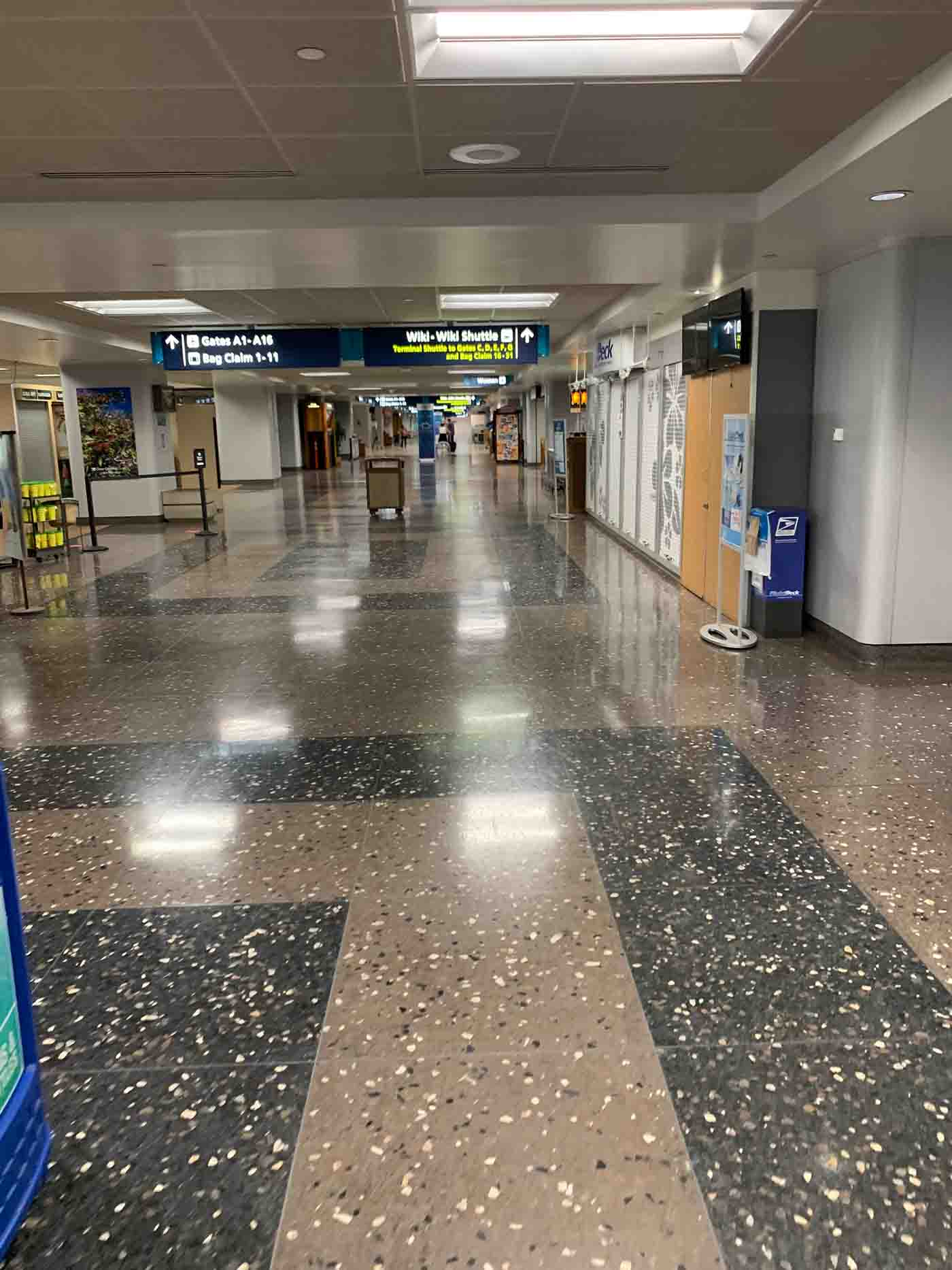(This series of stories is told from the perspective of our principal and managing partner, Justin Whedbee, CCP. During the COVID-19 outbreak beginning in early 2020, Justin did his best to continue serving our clients in the Islands while complying with travel restrictions and a variety of challenges brought on by the virus and accompanying shutdowns.)

A quick maskless respite after getting some water. Photos taken at 7:30 am on April 28, 2020.
It was March 13, 2020 and I was hurriedly returning to Hawaii from the mainland.
Watching what was going on, it seemed clear the country would soon be going into a lockdown of some sort. I knew our business would increase, as companies used to sending their adjusters into the field would no longer be doing so, and I wanted to be there to help with increasing assignments.
Sure enough, two days later, the closures started to happen. Working in Hawaii, I traverse the various islands from Honolulu (Oahu) on a regular basis. It is normal to travel to another island once or twice in a week. Traveling to another island for one (or more) claims throws a huge kink into an adjuster’s regular productivity, and going twice in a week can put you three times as far behind – but those are tales for a different day.
During COVID, I jokingly called our crew “The Expendables,” as we continued to work while our clients’ staffs’ travels were restricted by their employers. Hawaii is a beautiful place, but operates a bit differently than most other states. For the most part, each island is its own county, with the exception of Maui County, which also includes Lanai and Molokai. One of the difficult and frustrating things was that each county had different requirements for entry, rather than the state setting up uniform rules. Each county required a negative result from a specific COVID test, or they had an option to file for a work-related travel exemption.
Early on, it was impossible to find a rapid test which met the requirements, with results taking anywhere from two to five days. All counties required a test result no older than 48 hours. This time frame made it impossible to make appointments for inspection, confirm flight plans and rental car reservations, while not knowing when you would receive test results. Adding to the challenges, you needed an appointment to get a test, and the state did not have a sufficient supply, meaning delays of days. Walk-in-clinic lines were hours long.

Honolulu International (HNL) is massive and always has thousands of people wandering the various halls. More than 1.8M people per month – about 60,000 daily – pass through.

Walking through the Interisland (Terminal A) during COVID was so odd; many times I would not see another person walking the halls with me. All of the shops and restaurants were closed. It had a very deserted feel.
None of these options were workable, so for each (and every) trip, I would apply for a work exemption with the destination county. The requirement for entry varied by county, as did their time to respond with approval. I would book trips three to five days out, so I knew the counties would (hopefully) have time to process my exemption filing. On each county’s website, I would have to enter all the physical addresses I would be visiting. I would also have to include a letter authorizing my travel and why it is necessary, along with a statement that I qualified as an exempt-from-testing worker. This added at least an hour of planning per trip.
“Going neighbor island” during the pandemic required other planning beyond airfare and car rental. Normally, I would stop and sit down for a meal on a travel day; it’s a good mental break and always nice to be in a seat which isn’t moving. But with almost every restaurant shut down or offering “to go” only services, I would have to bring my own lunch, adding more prep time for each trip. After arriving on another island, I’d also fill up my water bottle before exiting the airport, to keep from having to stop again.
While all of this required extra diligence to complete my work, there were a number of things which COVID improved. The first is getting around Oahu; I will gladly take driving in traffic in Los Angeles, Houston, Chicago, or New York over driving in Honolulu. Normally, airport trips typically take 45-60 minutes to drive, park, and clear security. During COVID, I consistently made it in 16-18 minutes. So, it wasn’t all bad.
In the next installment, I’ll share stories about my trips to Kauai during the early days of COVID.



